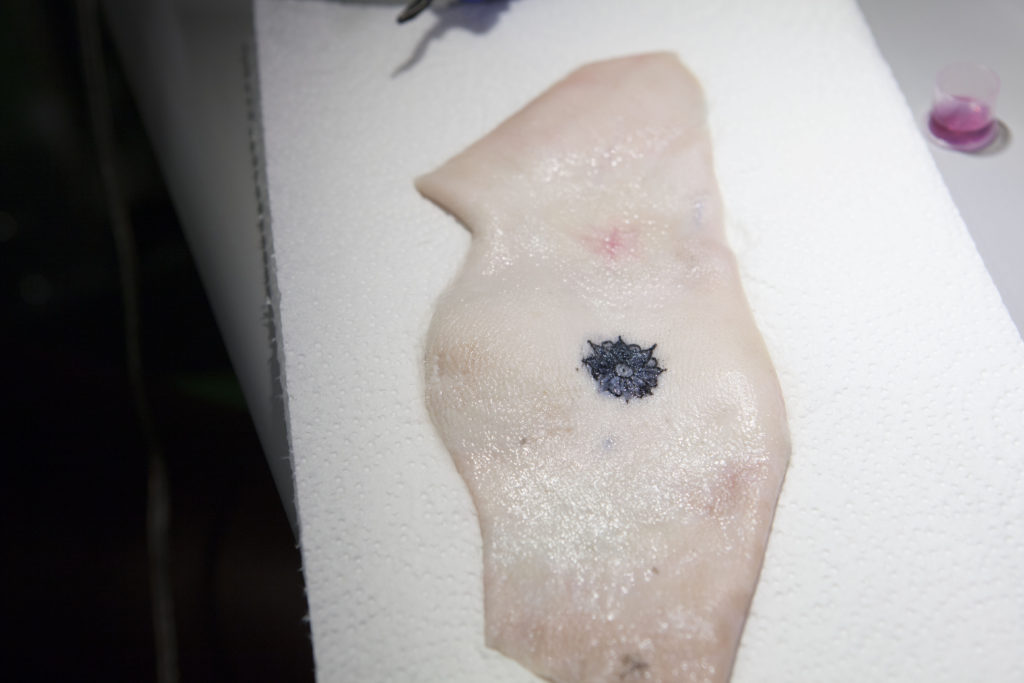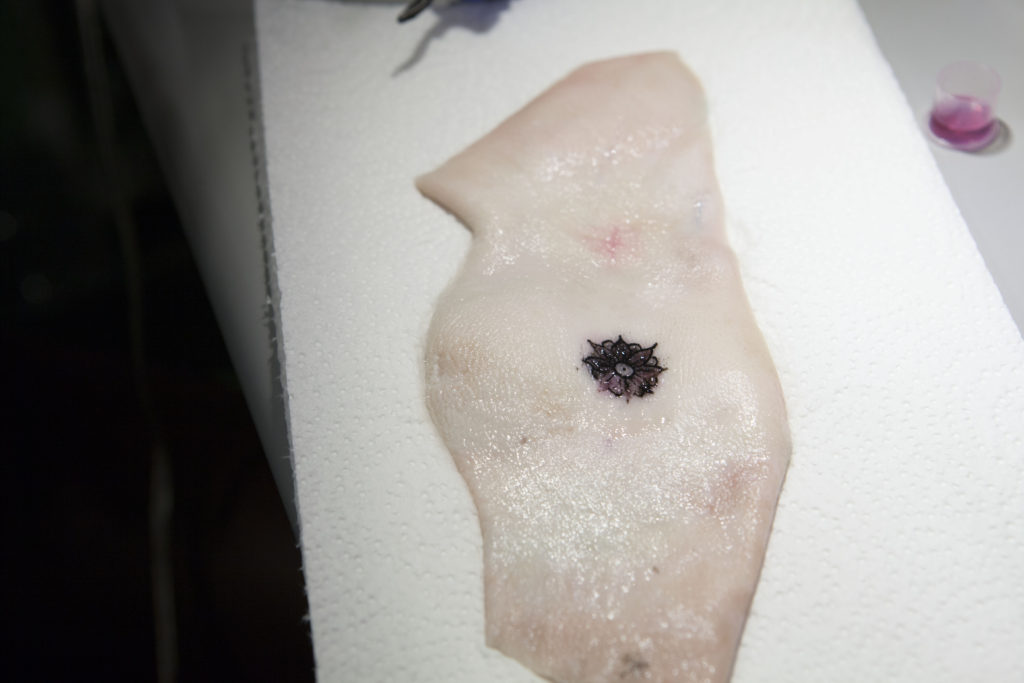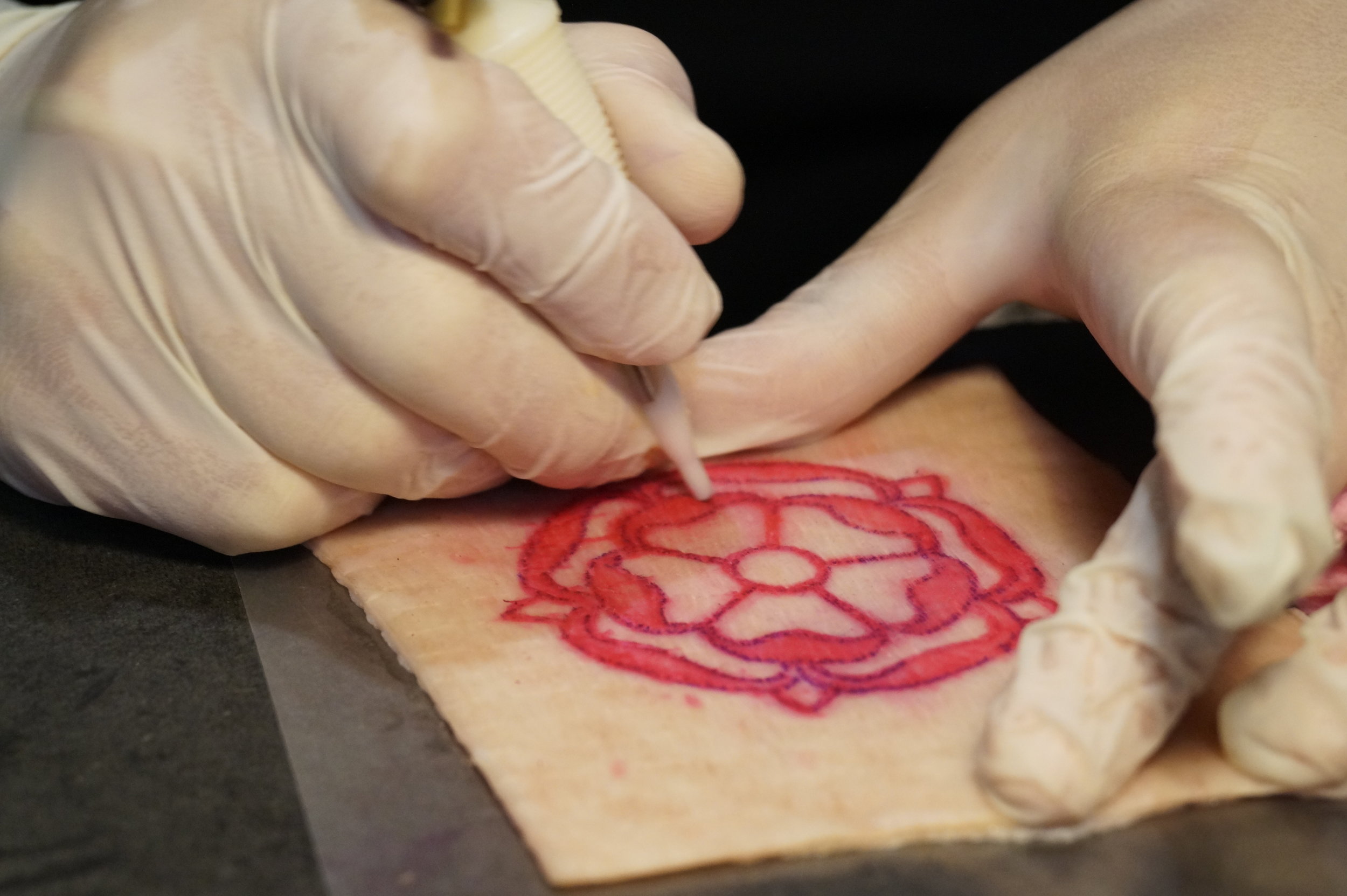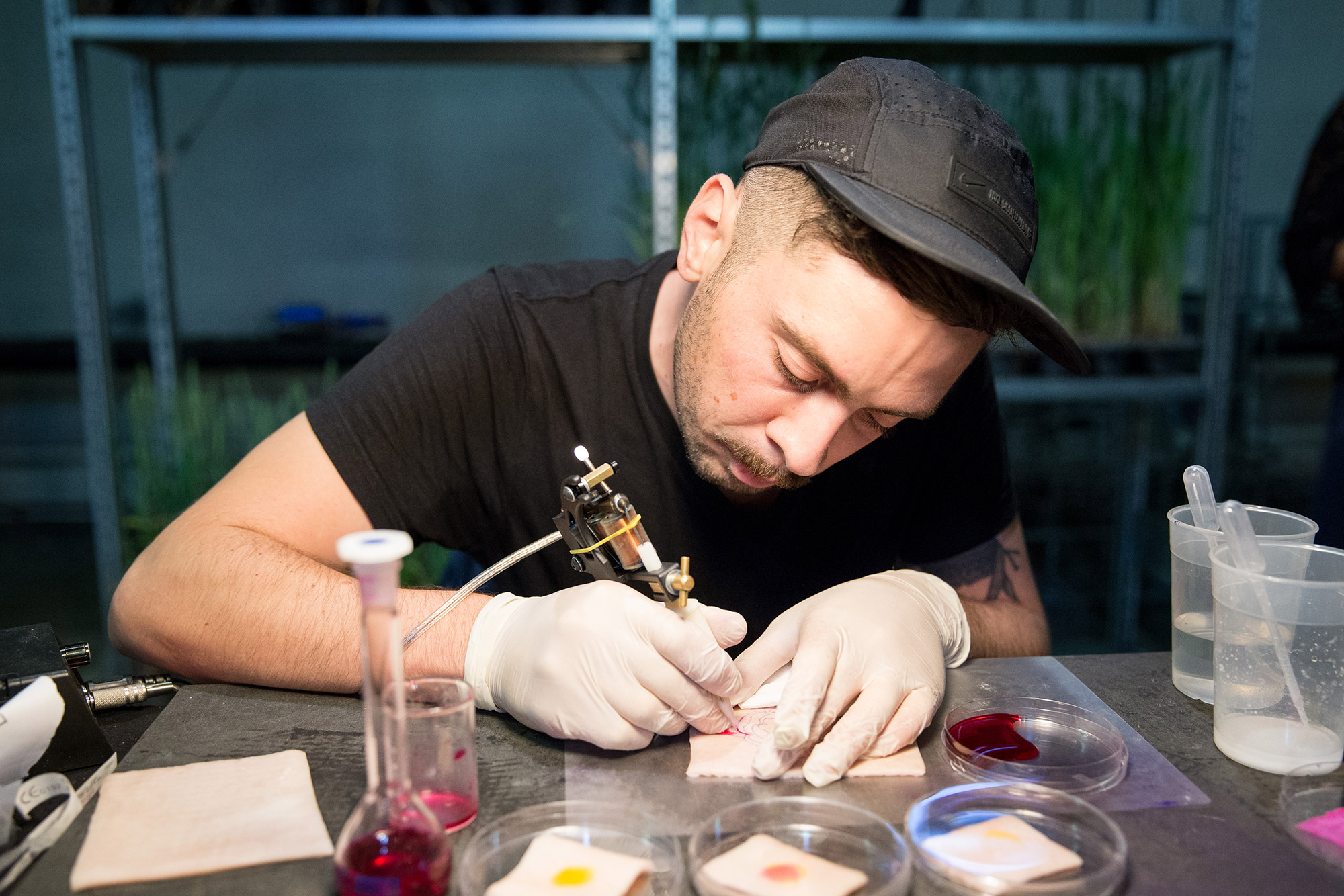Xin Liu tattooing Dermal Abyss into ex vivo pig skin
Dermal Abyss
Tattoos permeate the skin, coming directly into contact with body fluid. The chemical character of body fluid fluctuates over time due to our daily activities. DermalAbyss is a proof-of-concept that presents a novel approach to bio-interfaces in which the body surface is rendered an interactive display. Traditional tattoo inks were replaced with biosensors whose colors change in response to variations in the interstitial fluid. It blends advances in biotechnology with traditional methods in tattoo artistry. The Dermal Abyss creates a direct access to the inner body, reflecting internal metabolic processes in the shape of a tattoo. Four kinds of biosensors change color depending on the concentration of PH, sodium and glucose, respectively.
The body as a display
〰️
The body as a display 〰️
Dermal Abyss explores the possibility of rendering the body surface as a display, uncovering the enigma just below.
We investigated four biosensors, reacting to three pieces of biochemical information in body fluid and changing colors:
The pH sensor changes between purple and pink,
The glucose sensor shifts between blue and brown;
The sodium and a second pH sensor fluoresce at a higher intensity under UV light.
The Dermal Abyss creates direct access to the compartments in the body and reflects inner metabolic processes in the shape of a tattoo.
Preliminary evaluation was done in an ex vivo pig skin model. Several injections in the skin were done in order to understand the visibility and functionality of the biosensors. Visible changes were observed during the application.
The Dermal Abyss creates a direct access to the compartments in the body and reflects inner metabolic processes in a shape of a tattoo. It could be used for applications in continuously monitoring such as medical diagnostics, quantified self, and data encoding in the body.
Currently, during daily activities and alimentary habits, diabetics need to monitor their glucose levels by piercing the skin, 3 to 10 times per day. With d-abyss, we can replace the painful procedure with a tattoo, of which the color from pink to purple based on the glucose levels. Thus, the user could monitor the color changes and the need for insulin.
In the same way that the wearables industry is integrating fashion practices in their development, we envision new partnerships between the biotech companies and skin professionals, such as prosthesis experts and tattooists, in order to embrace the idea of human-device symbiosis.
Publication:
Katia Vega, Nan Jiang, Xin LIU, Viirj Kan, Nicolas Barry, Ali Yetisen, Pattie Maes and Joe Paradiso. "The Dermal Abyss: Interfacing with the Skin by Tattooing Biosensors" In Proceedings of the 2017 ACM International Symposium on Wearable Computers. ACM, 2017.
Updates:
After we released the project, Dermal Abyss was met with an unexpected level of interest and engagement from the public. We have received an overwhelming number of inquiries regarding the status of our work and future research directions. This blog post discusses the most common questions we’ve received about the project.
Credits:
Xin Liu, Katia Vega, Viirj Kan, Nick Barry from MIT Media Lab and Nan Jiang, Ali Yetisen from Harvard Medical School.
Music: Maribel Tafur
Video: Xin LIU, Nan Zhao, Viirj Kan, Katia Vega
Voice Over: Penny Webb
Tattoo Arist: Tristan Svart
Selected Coverage
Dermal Abyss’s launch ignited an international discussion on the impact of wearables and medical devices on our body connection. The work is widely covered by media, and our video has reached millions of views. The work was awarded Fast Company's 2017 Innovation by Design Awards and Scifi No Longer Award at SXSW.







